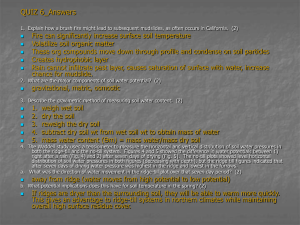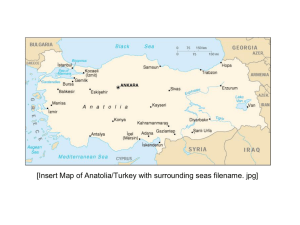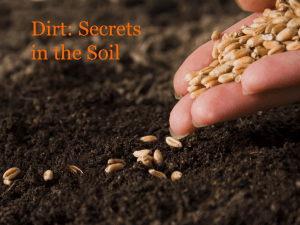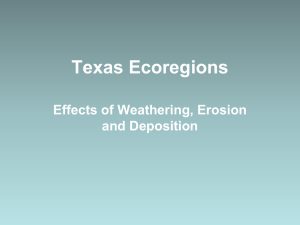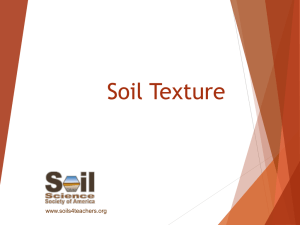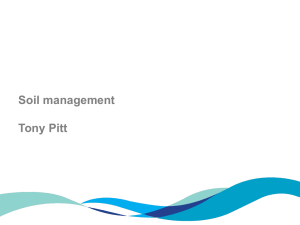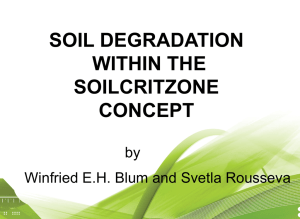How Soils are Formed
advertisement
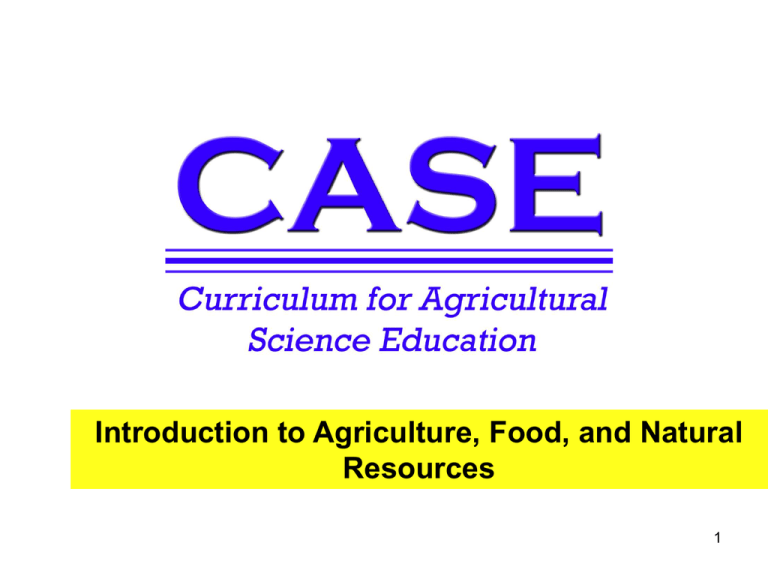
Introduction to Agriculture, Food, and Natural Resources 1 Introduction to Agriculture, Food, and Natural Resources How Soils are Formed Unit 3 – Lesson 3.3 Starting from the Ground Up 2 Five Formation Factors The basis of all soil will be derived by or aided in development by the following factors: Climate Organisms Parent Material Time Topography 3 Climate Climate includes several forces that act upon soils, which breakdown rock into smaller fragments and eventually down to small particles. Rainfall Temperature 4 Organisms If conditions are appropriate to support plants and soil dwelling animals, organisms thrive and assist in creating optimal soils for plant production. 5 Parent Material • Parent material is the substance from which soil is created. • In most cases, soil is formed from a type of rock that has been broken down by weathering or chemical processes. 6 Time • Soils develop at varying rates depending upon the climate and other formation factors. • The forces that form a given soil indicate how long it took the soil to be formed. 7 Topography What would soil be like on top of a hill compared to the bottom of the hill? Top – larger particles and less organized Bottom – smaller particles and deep Why? 8 Soil Development Classifications There are four main ways that the process of soil formation occurs: Addition – accumulation or deposition Reduction – leaching and erosion Translocation – movement within soil profile Transformation – soil changes in place by weathering or microorganism conversion 9 Erosion • The opposite of soil formation is erosion, which has a detrimental effect on soil. • Erosion comes in two forms: Water Wind 10 Erosion Happens In what circumstances is soil erosion more likely to happen? • • • • • Steep ground Too much irrigation Working soil in a rainy season Not protecting soil with ground cover Allowing wind to blow across worked soil 11 What happens when the soil is gone? • Poor crop production • More inputs are required like water and fertilizers to grow crops • Soil could be unusable in some cases 12 References Huddleston, J. H., & Kling, G. F. (1996). Manual for judging Oregon soils. Corvallis, OR: Oregon State University. Parker, R. (2010). Plant and soil science: Fundamentals and applications. Clifton Park, NY: Delmar. 13





